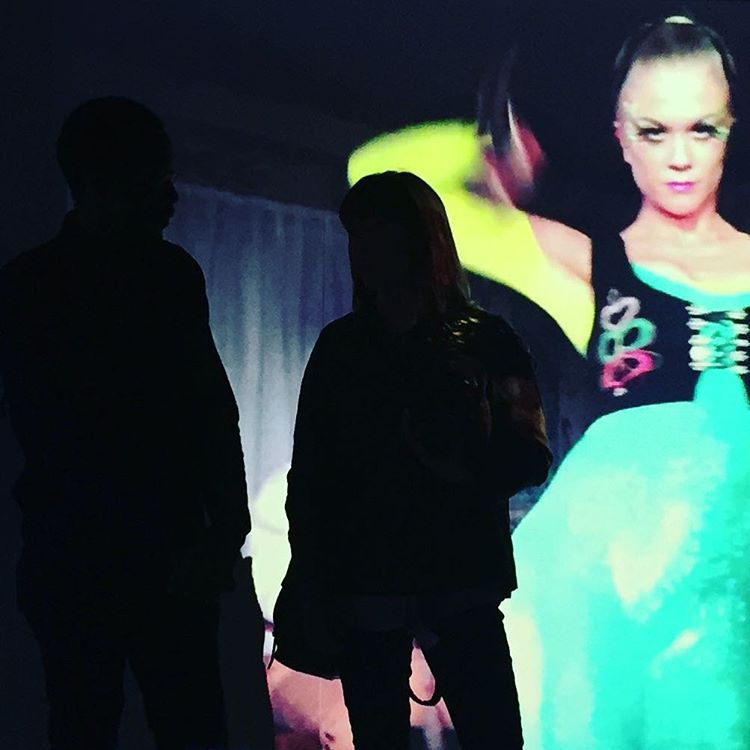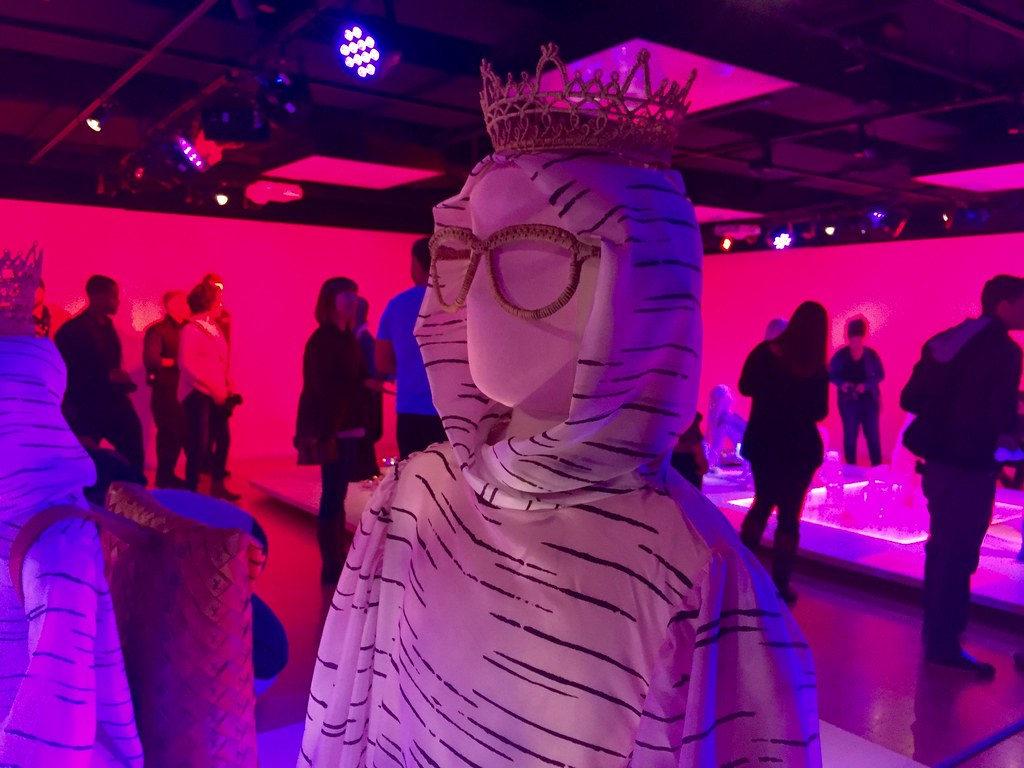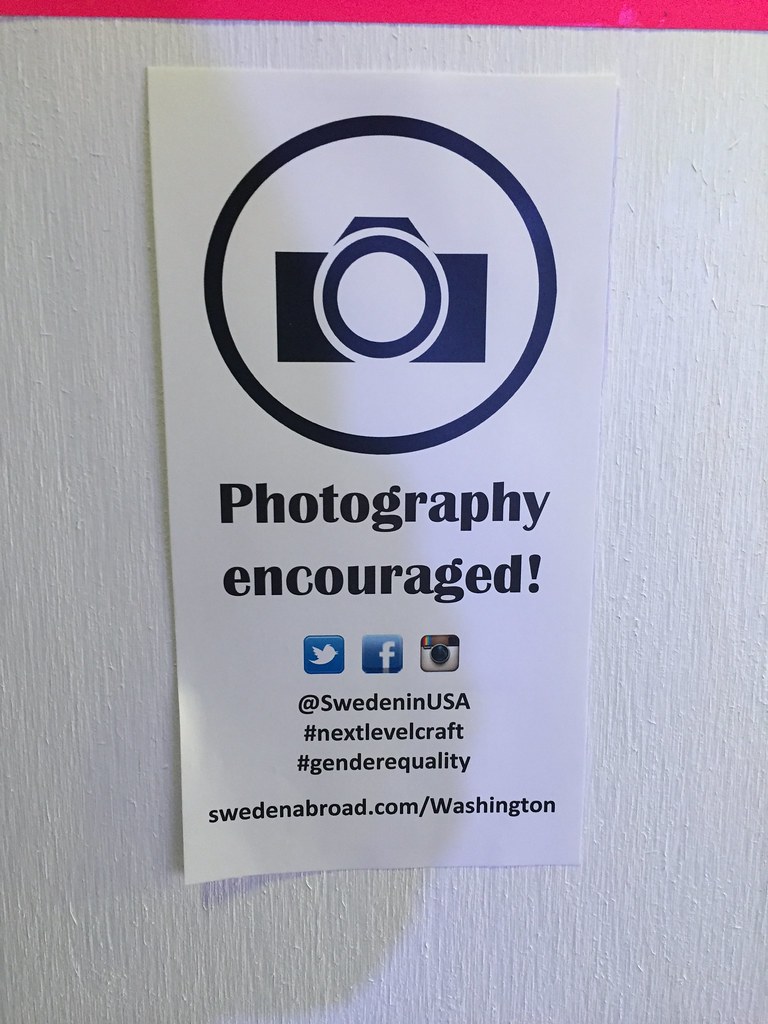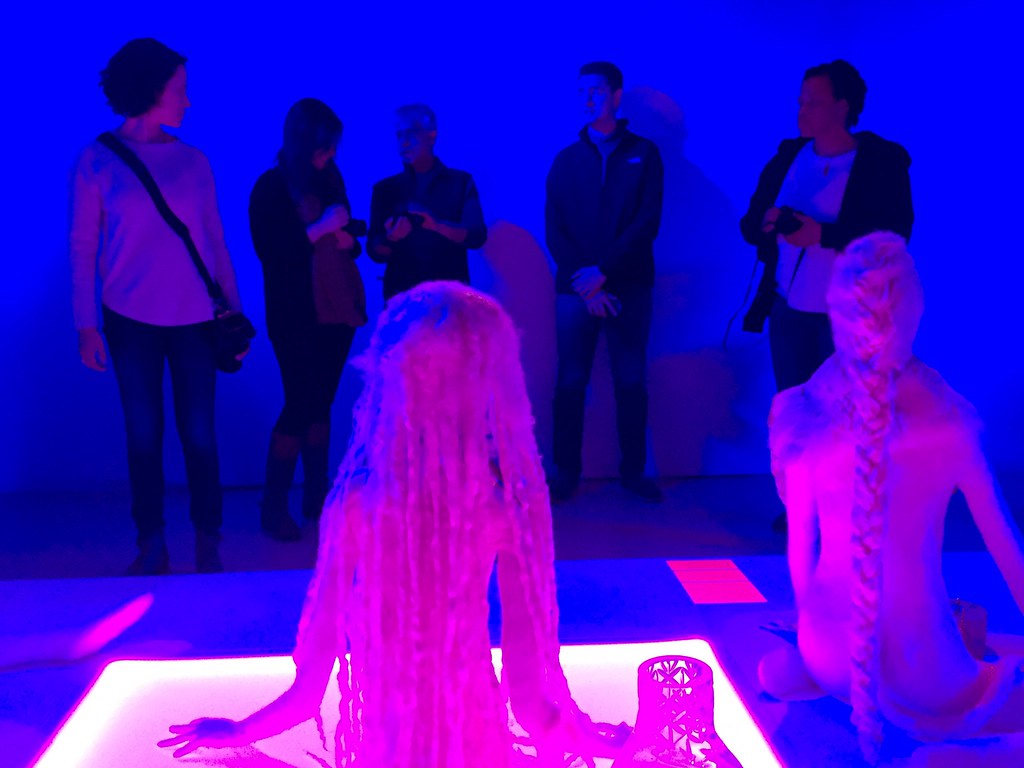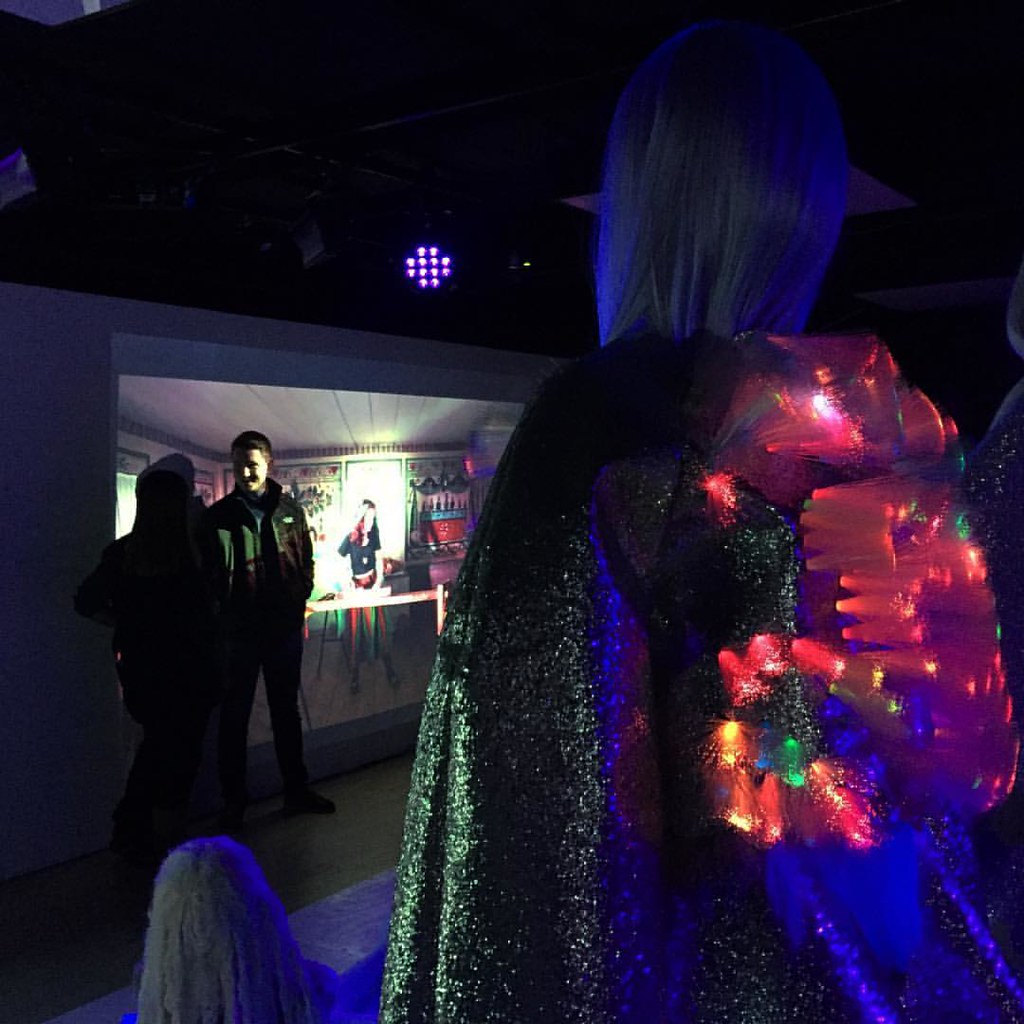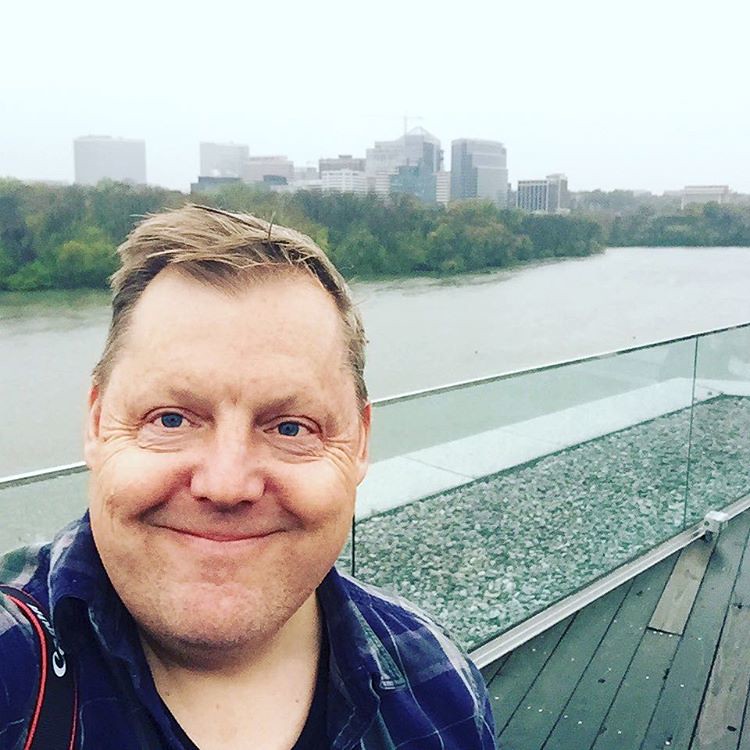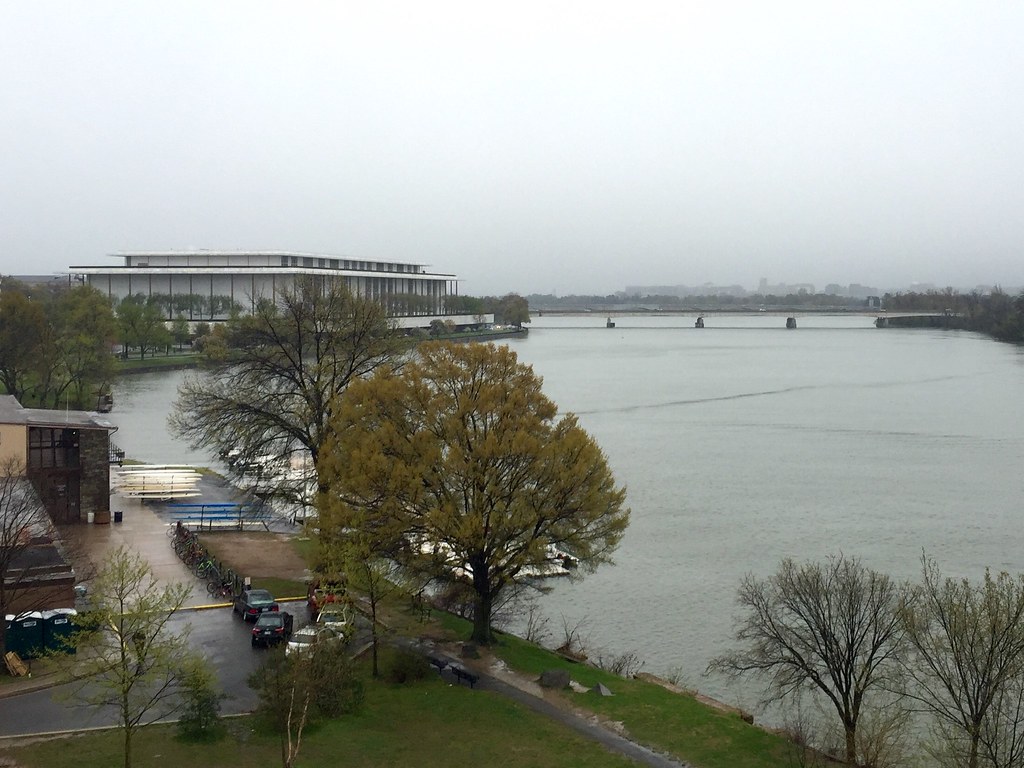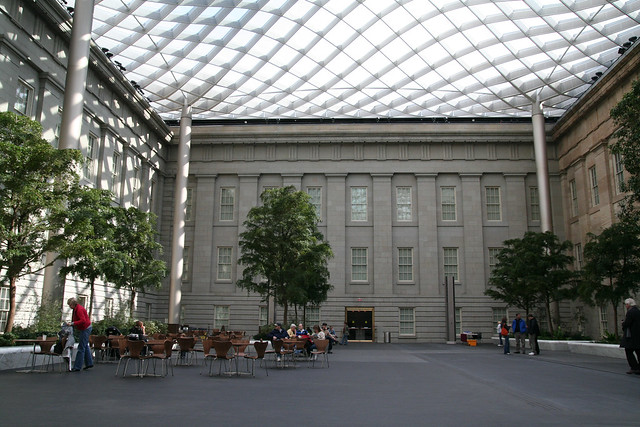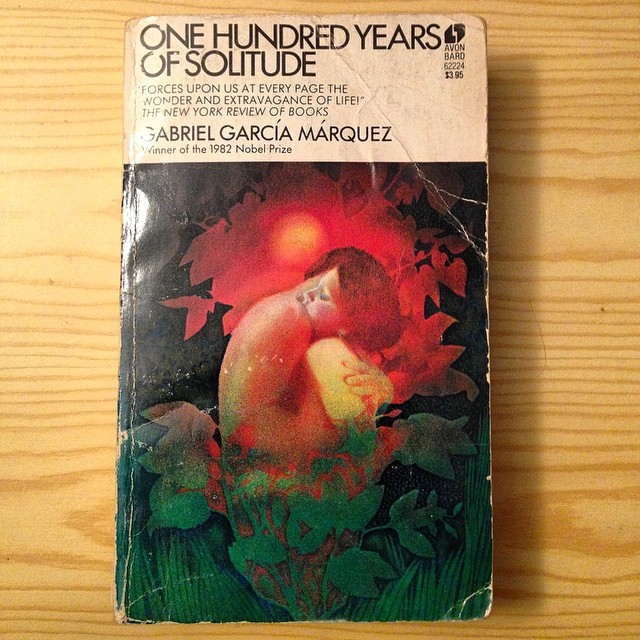InstagramDC recently got a sneak peek at the Next Level Craft exhibit at the House of Sweden in Georgetown. This beautiful embassy along the Potomac played host to an exhibit described as:
A mythical wedding, a demonstration, a carnival, a funeral procession, a fashion show or perhaps a combination of all these? A colorful parade of mysterious creatures wander through a fictitious northern landscape carrying unique crafted objects. Who are they and where are they going?
Next Level Craft is not your typical handicraft exhibition – it has its own soundtrack and music video. The renowned young Swedish artist Aia Jüdes has created a playful and different tale of craft, mixing voguing (a modern dance style characterized by perfect, stylized hand and arm movements, acrobatic poses and flamboyant fashion), street art, high fashion, pop culture and electronic music with everything from wool embroidery, weaving and felting to root binding, wood turning and birch bark braiding.
It was a surreal experience, a room filled with bizarre objects and an ever-changing lightshow. Adding to the strangeness was a trippy video of dancing Swedes. So much weirdness for InstagramDC to photograph, as the lights cycled from red to blue.
Best of all, photography was encouraged! It’s a very forward-thinking embassy for hosting this strange exhibit and for reaching out to local photographers to cover it. We had a blast taking pictures of these unique crafts and posing for photos in the weird lighting.
That was cool. But getting up on the roof was even cooler.
There was an amazing view of Rosslyn and the Kennedy Center, from a vantage point that few get to see. It was sleeting but no way was I going to miss this experience.
As a writer, it’s inspiring to see creative work. It’s source material for me. I wrote Murder on U Street, my novel about homicide in DC’s art scene, after having similar experiences. So don’t be surprised if a trippy Swedish art exhibit shows up in a future book 😉
